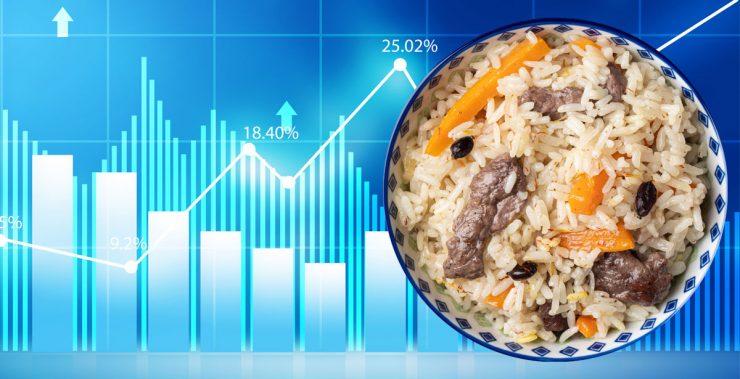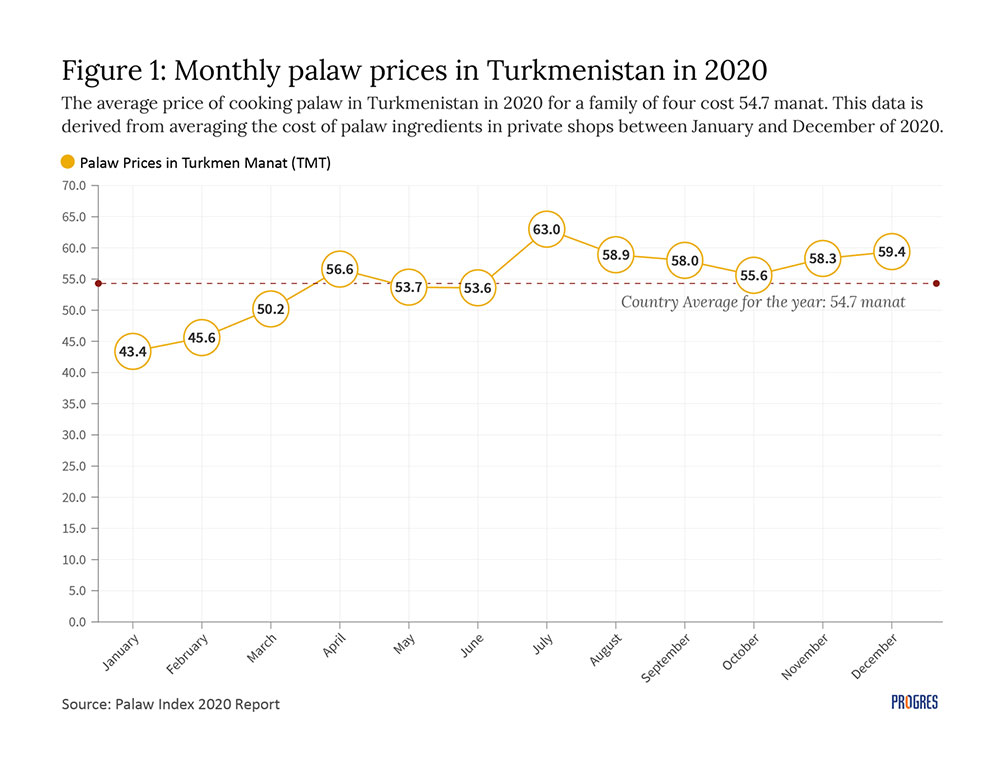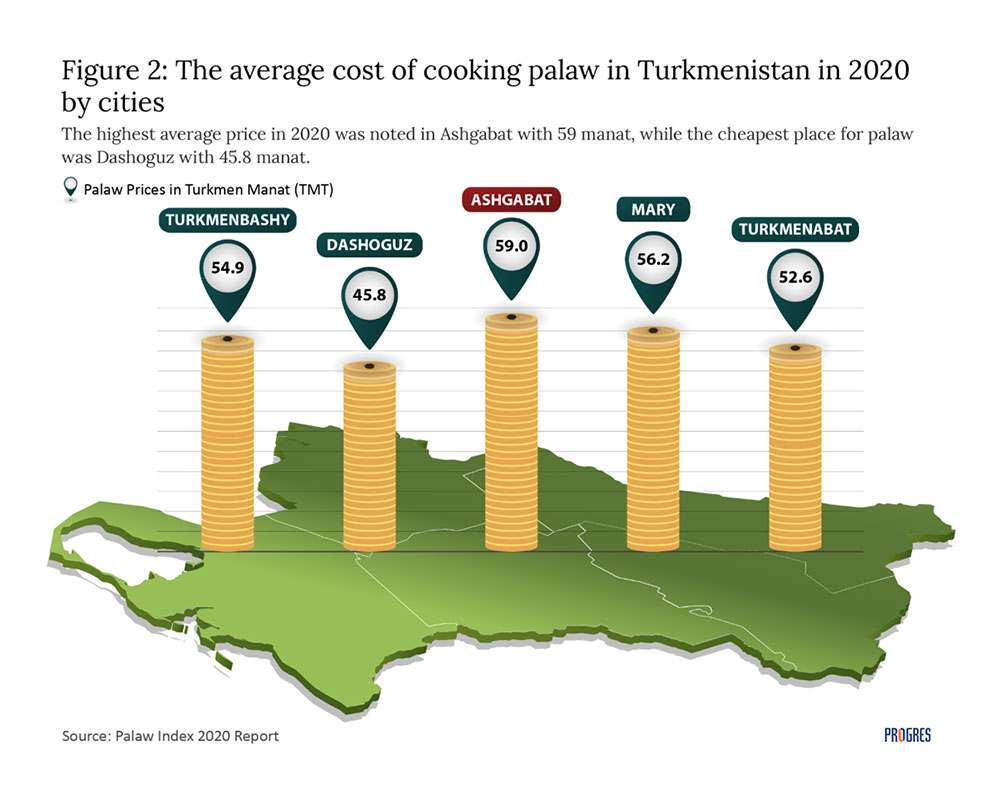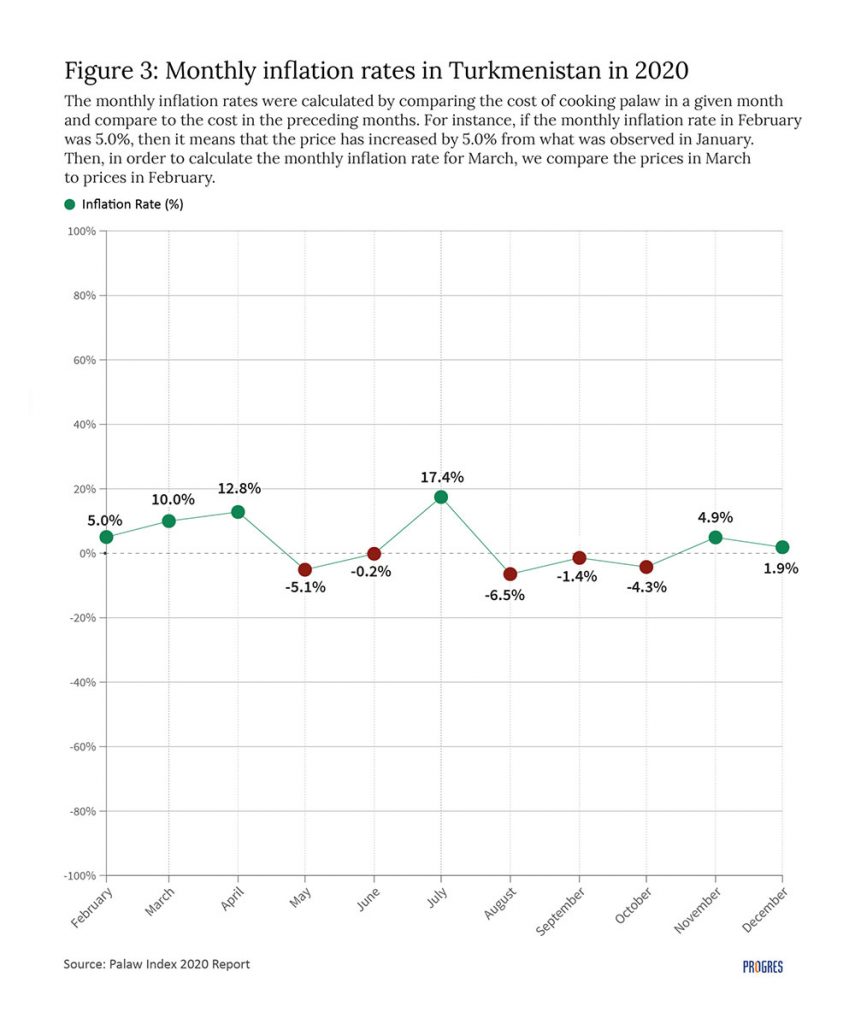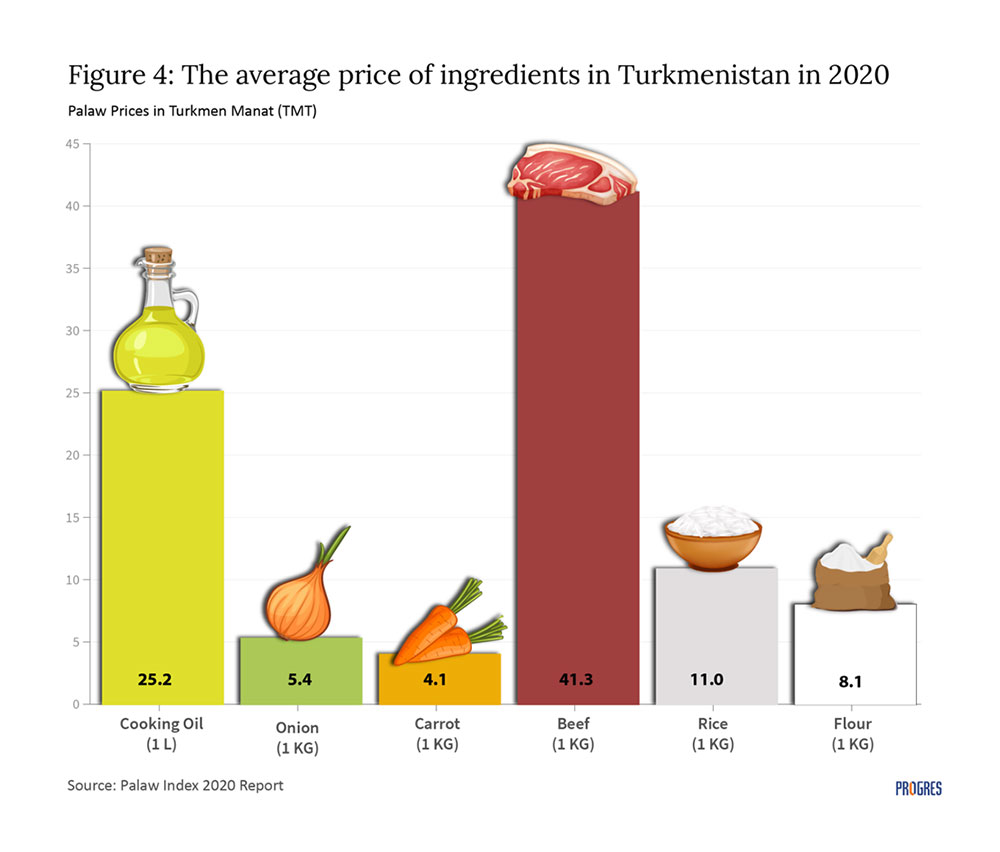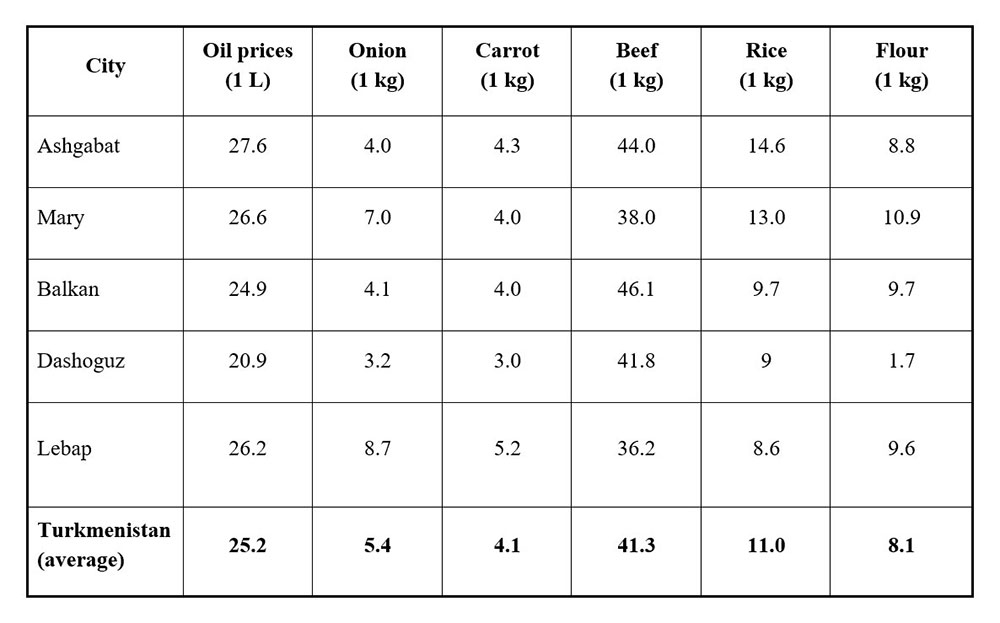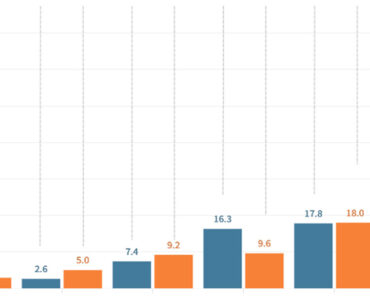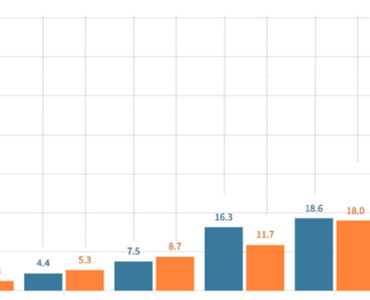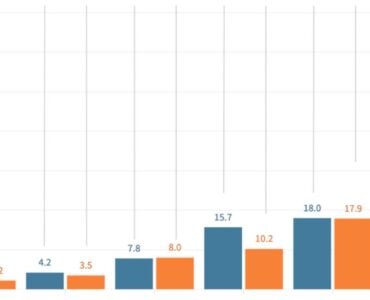The average cost of palaw in Turkmenistan in 2020 was 54.7 manat.
The average cost of cooking palaw in Turkmenistan in 2020 for a family of four stood at 54.70 manat. This data is derived from averaging the cost of ingredients for palaw in private shops between January and December of 2020 based on the recipe explained in methodology. The most expensive month to cook palaw in Turkmenistan was observed in July, when the average cost across the country reached 63 manat, while the cheapest month was seen in January with 43.4 manat (See Figure 1).
We do not have prices for Turkmenabat for the period between October and December, for Balkanabat for August and September, for Dashoguz for April and July.
With regards to comparing numbers across the country, the highest average cost in 2020 was noted in Ashgabat at 59.0 manat, while the cheapest place for palaw was Dashoguz at 45.8 manat. In Mary an average cost of palaw reached 56.2 manat, followed by Turkmenbashy and Turkmenabat with 54.9 and 52.6 manat, respectively (see Figure 2).
The monthly inflation rates were calculated by comparing the cost of cooking palaw in a given month and compared to the cost in the preceding months. For instance, if the monthly inflation rate in February was 5%, then it means that the cost has increased by 5% from what was observed in January. Then, in order to calculate the monthly inflation rate for March, we compared the prices in March to prices in February. The highest month-on-month (MoM) inflation rate was observed in July where it reached 17.4%, while the lowest MoM inflation (deflation) rate was seen in August when it dropped by 6.5% compared to the previous month. Monthly inflation rates for all months of 2020 are presented on Figure 3 below:
When it comes to the average prices of individual ingredients, they are listed below on Figure 4. We have indicated the price of onion, carrot, beef, rice, and flour for 1kg and the price of cooking oil is written for 1 liter. As it is explained in the methodology, in order to cook palaw we used different measurements for each ingredient according to the recipe.
What can explain the price hike of cooking palaw in 2020?
The major reason for the price hike of cooking palaw in Turkmenistan might be explained through the value of the Turkmen manat depreciating against the US dollar to its black-market exchange rate. The average exchange rate of the Turkmen manat against the US dollar in the black market was 18.9 manat in January 2020 and its value surged to 27.4 manat in December 2020, which represents a 45% increase. This might explain the main reason behind price surges in many months of 2020.
Although not all ingredients of palaw are imported from other countries, there might be some indirect effects of manat depreciation on prices of locally produced goods. For instance, small share of animal feed is imported from other countries, as are fertilizers and other chemicals that are used for agricultural production. Therefore, the prices of locally produced agricultural products rise due to increased prices of imported inputs.
Moreover, Turkmenistan experienced food shortages across the country as it closed its borders in the beginning of the COVID-19 pandemic in February 2020. Overall, 40% of the foods that are consumed in the country are locally produced in Turkmenistan and the remaining 60% are imported from abroad. Iran is the biggest exporter of food products in Turkmenistan as 80% of all imported agri-food products come from Iran. The shortage of agri-food products due to the border closure led to price hikes. Eventually, Turkmenistan partially reopened its borders for trade with Iran in mid-April and fully opened them only in October 2021. Although trade was partially reopened in April for trucks coming from Iran and other countries, the prices for palaw ingredients kept increasing throughout the year indicating Turkmen manat’s significant depreciation in the black market and consumer price inflation.
Annexes:
Table A1: The average prices of individual ingredients of palaw in the regions of Turkmenistan in 2020.

